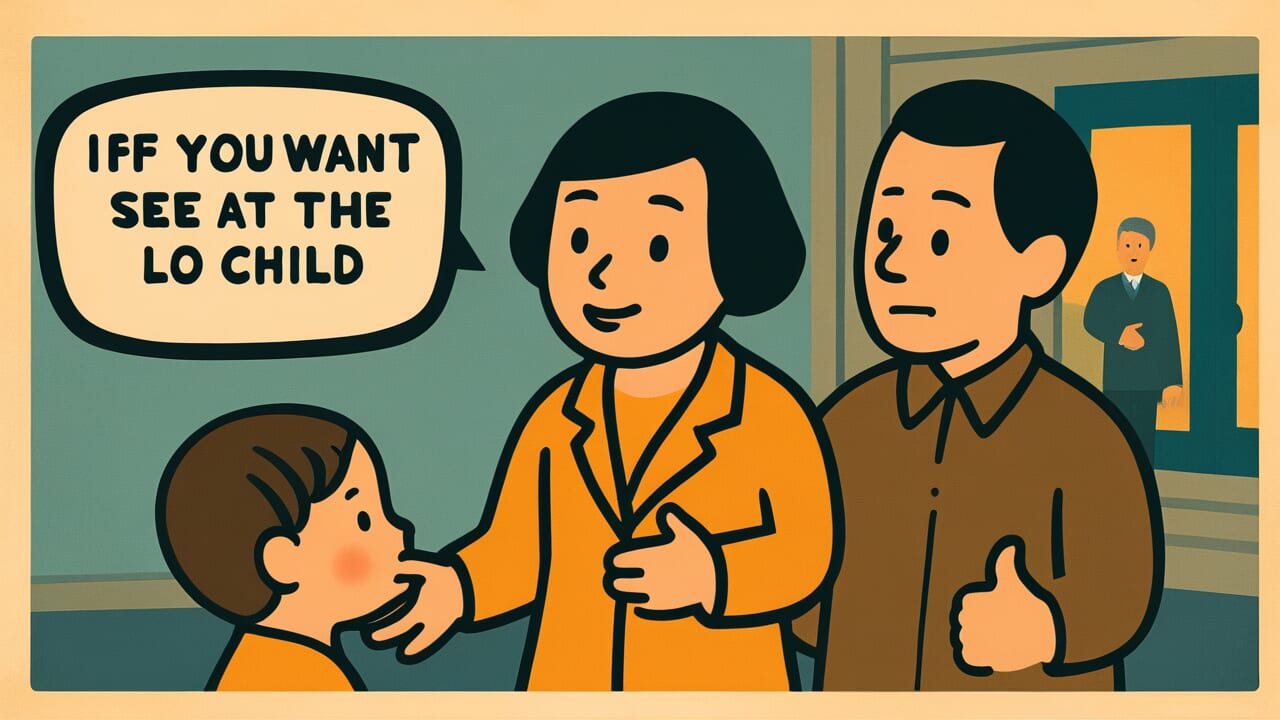How to Read “If you want to see the parents, look at the child”
Oya mitakerya ko o miro
Meaning of “If you want to see the parents, look at the child”
This proverb means you can understand a parent’s character and personality by observing their child. Children live with their parents every day and naturally absorb their words, behavior, and values.
By watching how a child acts and behaves, you can see the parenting style and character of the parents behind them.
This proverb is mainly used when evaluating people. For example, when you see a polite child, you might think “the parents must be proper people too.”
Or when you see a child with behavior problems, you might wonder “is there an issue with the parents’ education?”
Even today, people widely recognize that children are mirrors of their parents. This saying also shows how heavy the responsibility of raising children is.
Origin and Etymology
The exact first written appearance of this proverb is unclear. However, people likely used it among common folk during the Edo period.
Japan has long had many proverbs pointing out parent-child similarities. These include “blood will tell” and “a frog’s child is a frog.” This proverb belongs to that same tradition.
The expression “If you want to see the parents, look at the child” uses a direct and forceful command form. This isn’t just a suggestion to observe.
It shows that people passed this down as an important lesson for understanding others. Even when you cannot see the parents directly, you can guess their character by observing the child.
This practical wisdom is embedded in the saying.
Traditional Japanese society placed great importance on the family unit. People believed children grow up watching their parents’ backs and naturally inherit their values and lifestyle.
This proverb was born from the assumption that home education matters greatly and that parents and children share deep bonds.
Our ancestors recognized how much influence parents have. Their keen observation is condensed into these simple words.
Usage Examples
- Watching that child’s calm way of speaking, “If you want to see the parents, look at the child” is really true
- My son’s friends came over to play, and they were all so polite—”If you want to see the parents, look at the child” indeed
Universal Wisdom
This proverb has been passed down for generations because it contains deep insight into how environment decisively influences human growth.
Everyone learns patterns of speech and behavior from their parents, the first adults they meet. This happens not just through intentional teaching.
It occurs through casual everyday conversations, how parents handle difficulties, and how they treat others. Learning happens unconsciously in every situation.
Children accept their parents’ values completely before they develop the ability to think critically about them. If parents are honest, children learn honesty.
If parents respect others, children develop that same attitude. This fact shows both the heavy responsibility of being a parent and the high adaptability of human beings.
Our ancestors understood this invisible bond between parent and child. They recognized that not just biological blood ties, but the spiritual connection formed through daily life is the core of personality development.
That’s why they said if you want to know the parents, look at the child. This isn’t just an observation technique.
It’s wisdom that strikes at the essence of understanding human nature.
When AI Hears This
Information transmission from parent to child is actually lossy compression in information theory terms. The “source data” of a parent’s vast life experience, values, and behavior patterns gets converted into a child as a “compressed file.”
This happens through physical constraints of genetics and time constraints of limited child-rearing years.
What matters here is that lossy compression always involves priorities about “what to keep and what to discard.” When compressing an image to JPEG, parts sensitive to human eyes are kept while unnoticeable parts are removed.
Similarly, in parent-to-child transmission, “high-frequency, high-intensity information” gets priority. This includes the most frequently repeated behavior patterns, values with the strongest emotions, and unconscious-level reactions.
In other words, children retain not their parents’ surface knowledge but their essential thought processes and emotional habits.
That’s why “you can know the parents by looking at the child.” The child isn’t everything about the parent but a collection of features the compression algorithm judged “most important.”
Put differently, a child’s behavior reflects more strongly what parents unconsciously repeated rather than what they consciously taught.
The information that survived compression was the person’s core. This reverse calculation holds true.
Lessons for Today
This proverb teaches us today how much our words and actions influence those around us. Especially for parents or future parents, the fact that how you live gets directly passed to the next generation is both a heavy responsibility and a great hope.
If you live honestly, that honesty will reach your children. If you maintain an attitude of continuous learning, your children will understand the value of learning too.
You don’t need to be perfect. Rather, the attitude of learning from failures and trying to grow becomes the most valuable education.
This proverb also gives us a chance for self-reflection. If you observe someone’s child and guess about their parents, others might be looking at you the same way.
It becomes an opportunity to reexamine your own daily behavior.
Everyone lives while influencing someone. Being aware of that influence and aiming for a better way of living—that’s the essence of what this proverb asks of us living in modern times.



Comments